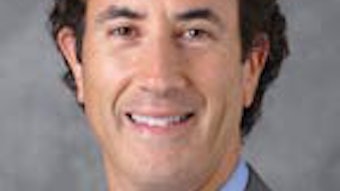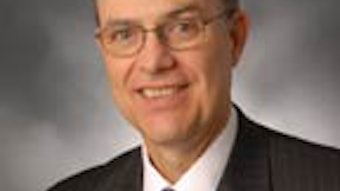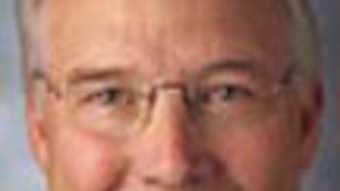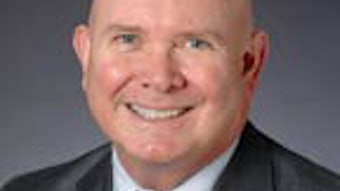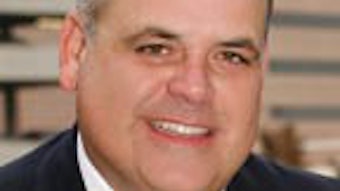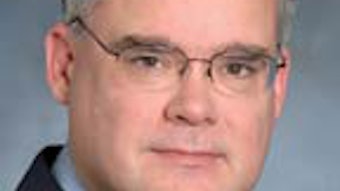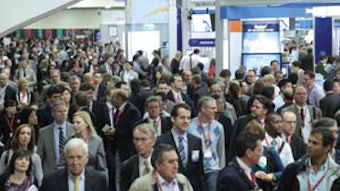Plan Ahead to Explore Washington, DC
In Washington, DC, you’ll enjoy access to fascinating free attractions and historic sites. Touch a moon rock, marvel at the Hope Diamond, view Dorothy’s ruby slippers, or explore Native American culture at the Smithsonian Institution’s 15 Washington, DC, area facilities. There are many ways to approach a look at the Washington DC Metro area sites. Depending on your interests and available time, a little planning can ensure a great experience. See some options on these pages. Discover treasures like the Gutenberg Bible at the Library of Congress, the only Leonardo da Vinci painting in North America at the National Gallery of Art, and historic documents like the Declaration of Independence at the National Archives. Away from these celebrated sites, Washington, DC, unwinds into a fascinating network of neighborhoods where visitors discover trendy boutiques, hip bars, and restaurants, plus art galleries, historic homes, and lush parks and gardens. Shoppers love the store-lined streets of Georgetown, while jazz music fans won’t want to miss a trip to U Street, where Duke Ellington played his first notes. The city’s international character shines through in the Adams Morgan and Dupont Circle neighborhoods, two prime destinations for eclectic dining and nightlife, and the historic center of the city’s embassy community. The arrival of several new eateries has made the nation’s capital a prime destination for dining out, with many of the city’s top tables located in the downtown Penn Quarter neighborhood. DC is also earning new recognition as a thriving performing arts town, with 65 professional theatre companies based in the metropolitan area presenting edgy world premieres and celebrated Broadway musicals throughout the year. As you begin to plan your trip to Washington, DC, consider extending your stay to take full advantage of everything the nation’s capital has to offer. Frequently Asked Questions about Washington, DC How can I tour the White House? Tours of the White House are available by advance arrangement through your U.S. representative or senators. Tours are arranged for groups of 10 or more, but smaller groups and families can request to join a tour. Submit a request through your elected official’s office at least one month, and up to six months, in advance. Tours are arranged on a first-come, first-served, basis. Visitors who are not U.S. citizens should contact their embassy in DC about tours for international visitors, which are arranged through the Protocol Desk at the State Department. These self-guided tours are available from 7:30 am-11:00 am Tuesday through Thursday, 7:30 am-noon on Fridays, and 7:30 am-1:00 pm on Saturdays (excluding federal holidays or unless otherwise noted). All guests 18 and older will be required to present valid, government-issued photo identification. All foreign nationals must present their passport. All other forms of foreign identification will not be accepted. For more information, call the White House Visitors Center at 1-202-456-7041 or visit whitehouse.gov. You can locate the office of your U.S. representative by visiting house.gov. For your U.S. senator’s office, visit senate.gov. How can I tour the U.S. Capitol or see Congress in session? To visit areas of the U.S. Capitol beyond the Capitol Visitor Center, you must make a reservation in advance. Note that tour schedules can fill up quickly, so it is advisable to book your tour well in advance of your visit. The Capitol is open to the public for tours Monday through Saturday. U.S. residents can go directly through the offices of their U.S. representative or U.S. senators. Many Congressional offices offer their own staff-led tours to constituent groups of up to 15 people, and most can assist you in booking a general tour. Tours can also be arranged directly through the U.S. Capitol Visitor Center using the online reservation system at visitthecapitol.gov. A limited number of same-day tour tickets may also be available at the Capitol Visitor Center. Tickets are not required to tour the Capitol Visitor Center, which is open 8:30 am-4:30 pm, Monday through Saturday. Visit aoc.gov for more information. The Senate and House Galleries are open to visitors whenever either body is in session. In addition, the House Gallery is open 9:00 am-4:30 pm, Monday through Friday, when the House is not in session. The Senate Gallery is open 9:30 am-4:00 p.m., Monday through Friday, when the Senate is not in session. Passes are required to enter either gallery at any time. Visitors may obtain gallery passes from the offices of their U.S. senators or U.S. representative. Gallery passes are available for international visitors at the House and Senate Appointment Desks on the upper level. Information about tours for visitors with special needs is available from the Congressional Special Services Office at 1-202-224-4048 or 1-202-224-4049 (TDD). Which attractions require tickets? Many of Washington, DC’s major attractions are open for the public and do not require tickets, including the museums of the Smithsonian system, the National Zoo, the National Gallery of Art, and the national monuments and memorials. Some of Washington, DC’s most popular ticketed attractions, including the Newseum, National Museum of Crime & Punishment, Madame Tussauds, the U.S. Holocaust Memorial Museum, and the International Spy Museum, allow visitors to avoid waiting in line by reserving their tour tickets for a small fee. Timed passes are needed for the permanent exhibition at the U.S. Holocaust Memorial Museum. Passes are free and are distributed daily beginning at 10:00 am on a first-come, first-served basis. You can reserve tickets for a service charge of $1.75 (for groups of 21 or smaller). Groups of 21 or more qualify to make a scheduled visit to the museum for the permanent exhibition: The Holocaust or the current special exhibitions. Group reservations are free and must be submitted using the museum’s online reservation system. Requests are processed on a first-come, first-served basis, and may be submitted from 24 hours to 12 months in advance of the visit date. Visit ushmm.org or call 1-202-488-0400 for additional information. Tickets are also required to tour the U.S. Capitol. To guarantee availability, you should reserve your tour in advance online at visitthecapitol.gov or through the offices of your U.S. representative or U.S. senators. A limited number of same-day tour tickets may also be available at the Capitol Visitor Center. While the Library of Congress, the Supreme Court, Ford’s Theatre, the National Gallery of Art, and the Smithsonian museums do not require tickets, you may want to check schedules in advance to take advantage of guided interpretive tours, lectures, IMAX movies, and other programs. Can we tour the FBI building? At this time, the FBI tour at the J. Edgar Hoover Building is closed for renovations. Please call 1-202-324-3447 or visit fbi.gov for more information. Can we tour the Pentagon? Members of the general public must contact the offices of their U.S. representative or U.S. senators to request a tour. You can find your senators’ contact information at senate.gov and your representative’s information at house.gov. All tour requests must be made at least two weeks in advance and no earlier than three months prior to the requested tour date. Military personnel assigned to the Pentagon with escort privileges may request to accompany their friends and family on tours of the facility. If you are assigned to the Pentagon or if you are visiting a Pentagon staff member, contact the Pentagon Force Protection Agency at 1-703-697-1001 to determine escort status. The Pentagon tour office will accept and process group tours from educational institutions (schools/colleges/academies), churches, government agencies, or military organizations consisting of five or more visitors. Please review the Group Tour Guidelines before making a Group Tour request. Call 1-703-697-1776 or visit http://pentagon.afis.osd.mil for more information. How does Metro work? Washington, DC, is proud to have one of the world’s best public transportation systems. Most visitors quickly master the Metro system and, in the process, they discover that it’s a quick, efficient, and affordable way to get around the city, and many find it to be an enjoyable attraction. The Metro operates Monday through Thursday from 5:00 am-midnight; Friday until 3:00 am; Saturdays from 7:00 am to 3:00 am; and Sunday from 7:00 am-midnight. Base fares start at $1.75 per trip (including trips between all downtown points), but the rates are higher for visitors traveling from the suburbs and during rush hour. To calculate the distance and fares between two stops, visit metroopensdoors.com. There are five lines, Red, Blue, Orange, Yellow, and Green, connected to each other at transfer stations in downtown and the close-in suburbs. Some stations are serviced by more than one line. Trains are clearly marked with the color of the line. Trains indicate the direction in which they are traveling with the name of the end-point of the line. During rush hour, trains usually come every five to six minutes. At off-peak times, trains come every 12 minutes. Late-night trains come every 15 to 20 minutes Tickets can be purchased by cash or credit cards from vending machines located at the stations. Station managers are on hand to assist you in purchasing your tickets. Mount Vernon–Home and estate of the father of our country. George Washington’s plantation on the banks of the beautiful Potomac River offers visitors a chance to understand America’s first hero and the fascinating world in which he lived. Since the Mount Vernon Ladies’ Association bought the nearly empty Mansion in 1858, it has gathered Washington objects and used archaeology and research to piece together clues about the buildings and gardens of a bygone era. More than one million visitors come to walk in Washington’s footsteps each year, making Mount Vernon the most popular historic estate in America. Open 365 days of the year. September hours are 9:00 am–5:00 pm. To purchase tickets call 1-800-429-1520 or email onlineticketing@mountvernon.org. Top 10 Things to Do in Washington, DC Visit the Smithsonian museums and galleries. Tour the national monuments and memorials. Tour the Three Houses of Government. Take a walk through Georgetown. Walk, bike, or kayak along the Chesapeake and Ohio Canal. Attend a concert at the Kennedy Center. Visit other museums. Take in a baseball game at Nationals Park. Explore Mount Vernon. Take a walking tour of Old Town, Alexandria.
In Washington, DC, you’ll enjoy access to fascinating free attractions and historic sites. Touch a moon rock, marvel at the Hope Diamond, view Dorothy’s ruby slippers, or explore Native American culture at the Smithsonian Institution’s 15 Washington, DC, area facilities. There are many ways to approach a look at the Washington DC Metro area sites. Depending on your interests and available time, a little planning can ensure a great experience. See some options on these pages. Discover treasures like the Gutenberg Bible at the Library of Congress, the only Leonardo da Vinci painting in North America at the National Gallery of Art, and historic documents like the Declaration of Independence at the National Archives.
Away from these celebrated sites, Washington, DC, unwinds into a fascinating network of neighborhoods where visitors discover trendy boutiques, hip bars, and restaurants, plus art galleries, historic homes, and lush parks and gardens. Shoppers love the store-lined streets of Georgetown, while jazz music fans won’t want to miss a trip to U Street, where Duke Ellington played his first notes. The city’s international character shines through in the Adams Morgan and Dupont Circle neighborhoods, two prime destinations for eclectic dining and nightlife, and the historic center of the city’s embassy community.
The arrival of several new eateries has made the nation’s capital a prime destination for dining out, with many of the city’s top tables located in the downtown Penn Quarter neighborhood. DC is also earning new recognition as a thriving performing arts town, with 65 professional theatre companies based in the metropolitan area presenting edgy world premieres and celebrated Broadway musicals throughout the year.
As you begin to plan your trip to Washington, DC, consider extending your stay to take full advantage of everything the nation’s capital has to offer.
Frequently Asked Questions about Washington, DC
How can I tour the White House?
Tours of the White House are available by advance arrangement through your U.S. representative or senators. Tours are arranged for groups of 10 or more, but smaller groups and families can request to join a tour. Submit a request through your elected official’s office at least one month, and up to six months, in advance. Tours are arranged on a first-come, first-served, basis. Visitors who are not U.S. citizens should contact their embassy in DC about tours for international visitors, which are arranged through the Protocol Desk at the State Department. These self-guided tours are available from 7:30 am-11:00 am Tuesday through Thursday, 7:30 am-noon on Fridays, and 7:30 am-1:00 pm on Saturdays (excluding federal holidays or unless otherwise noted). All guests 18 and older will be required to present valid, government-issued photo identification. All foreign nationals must present their passport. All other forms of foreign identification will not be accepted.
For more information, call the White House Visitors Center at 1-202-456-7041 or visit whitehouse.gov. You can locate the office of your U.S. representative by visiting house.gov. For your U.S. senator’s office, visit senate.gov.
How can I tour the U.S. Capitol or see Congress in session?
To visit areas of the U.S. Capitol beyond the Capitol Visitor Center, you must make a reservation in advance. Note that tour schedules can fill up quickly, so it is advisable to book your tour well in advance of your visit. The Capitol is open to the public for tours Monday through Saturday. U.S. residents can go directly through the offices of their U.S. representative or U.S. senators. Many Congressional offices offer their own staff-led tours to constituent groups of up to 15 people, and most can assist you in booking a general tour. Tours can also be arranged directly through the U.S. Capitol Visitor Center using the online reservation system at visitthecapitol.gov. A limited number of same-day tour tickets may also be available at the Capitol Visitor Center. Tickets are not required to tour the Capitol Visitor Center, which is open 8:30 am-4:30 pm, Monday through Saturday. Visit aoc.gov for more information. The Senate and House Galleries are open to visitors whenever either body is in session. In addition, the House Gallery is open 9:00 am-4:30 pm, Monday through Friday, when the House is not in session. The Senate Gallery is open 9:30 am-4:00 p.m., Monday through Friday, when the Senate is not in session. Passes are required to enter either gallery at any time. Visitors may obtain gallery passes from the offices of their U.S. senators or U.S. representative. Gallery passes are available for international visitors at the House and Senate Appointment Desks on the upper level.
Information about tours for visitors with special needs is available from the Congressional Special Services Office at 1-202-224-4048 or 1-202-224-4049 (TDD).
Which attractions require tickets?
Many of Washington, DC’s major attractions are open for the public and do not require tickets, including the museums of the Smithsonian system, the National Zoo, the National Gallery of Art, and the national monuments and memorials. Some of Washington, DC’s most popular ticketed attractions, including the Newseum, National Museum of Crime & Punishment, Madame Tussauds, the U.S. Holocaust Memorial Museum, and the International Spy Museum, allow visitors to avoid waiting in line by reserving their tour tickets for a small fee.
Timed passes are needed for the permanent exhibition at the U.S. Holocaust Memorial Museum. Passes are free and are distributed daily beginning at 10:00 am on a first-come, first-served basis. You can reserve tickets for a service charge of $1.75 (for groups of 21 or smaller). Groups of 21 or more qualify to make a scheduled visit to the museum for the permanent exhibition: The Holocaust or the current special exhibitions. Group reservations are free and must be submitted using the museum’s online reservation system. Requests are processed on a first-come, first-served basis, and may be submitted from 24 hours to 12 months in advance of the visit date. Visit ushmm.org or call 1-202-488-0400 for additional information.
Tickets are also required to tour the U.S. Capitol. To guarantee availability, you should reserve your tour in advance online at visitthecapitol.gov or through the offices of your U.S. representative or U.S. senators. A limited number of same-day tour tickets may also be available at the Capitol Visitor Center.
While the Library of Congress, the Supreme Court, Ford’s Theatre, the National Gallery of Art, and the Smithsonian museums do not require tickets, you may want to check schedules in advance to take advantage of guided interpretive tours, lectures, IMAX movies, and other programs.
Can we tour the FBI building?
At this time, the FBI tour at the J. Edgar Hoover Building is closed for renovations. Please call 1-202-324-3447 or visit fbi.gov for more information.
Can we tour the Pentagon?
Members of the general public must contact the offices of their U.S. representative or U.S. senators to request a tour. You can find your senators’ contact information at senate.gov and your representative’s information at house.gov. All tour requests must be made at least two weeks in advance and no earlier than three months prior to the requested tour date. Military personnel assigned to the Pentagon with escort privileges may request to accompany their friends and family on tours of the facility. If you are assigned to the Pentagon or if you are visiting a Pentagon staff member, contact the Pentagon Force Protection Agency at 1-703-697-1001 to determine escort status. The Pentagon tour office will accept and process group tours from educational institutions (schools/colleges/academies), churches, government agencies, or military organizations consisting of five or more visitors. Please review the Group Tour Guidelines before making a Group Tour request. Call 1-703-697-1776 or visit http://pentagon.afis.osd.mil for more information.
How does Metro work?
Washington, DC, is proud to have one of the world’s best public transportation systems. Most visitors quickly master the Metro system and, in the process, they discover that it’s a quick, efficient, and affordable way to get around the city, and many find it to be an enjoyable attraction.
The Metro operates Monday through Thursday from 5:00 am-midnight; Friday until 3:00 am; Saturdays from 7:00 am to 3:00 am; and Sunday from 7:00 am-midnight. Base fares start at $1.75 per trip (including trips between all downtown points), but the rates are higher for visitors traveling from the suburbs and during rush hour. To calculate the distance and fares between two stops, visit metroopensdoors.com.
There are five lines, Red, Blue, Orange, Yellow, and Green, connected to each other at transfer stations in downtown and the close-in suburbs. Some stations are serviced by more than one line. Trains are clearly marked with the color of the line. Trains indicate the direction in which they are traveling with the name of the end-point of the line. During rush hour, trains usually come every five to six minutes. At off-peak times, trains come every 12 minutes. Late-night trains come every 15 to 20 minutes
Tickets can be purchased by cash or credit cards from vending machines located at the stations. Station managers are on hand to assist you in purchasing your tickets.
Mount Vernon–Home and estate of the father of our country.
George Washington’s plantation on the banks of the beautiful Potomac River offers visitors a chance to understand America’s first hero and the fascinating world in which he lived. Since the Mount Vernon Ladies’ Association bought the nearly empty Mansion in 1858, it has gathered Washington objects and used archaeology and research to piece together clues about the buildings and gardens of a bygone era. More than one million visitors come to walk in Washington’s footsteps each year, making Mount Vernon the most popular historic estate in America. Open 365 days of the year. September hours are 9:00 am–5:00 pm. To purchase tickets call 1-800-429-1520 or email onlineticketing@mountvernon.org.
- Visit the Smithsonian museums and galleries.
- Tour the national monuments and memorials.
- Tour the Three Houses of Government.
- Take a walk through Georgetown.
- Walk, bike, or kayak along the Chesapeake and Ohio Canal.
- Attend a concert at the Kennedy Center.
- Visit other museums.
- Take in a baseball game at Nationals Park.
- Explore Mount Vernon.
- Take a walking tour of Old Town, Alexandria.



